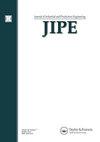PSO-ANN混合算法与遗传算法相结合优化2017A合金铣削工艺参数
IF 4.6
Q2 ENGINEERING, INDUSTRIAL
Journal of Industrial and Production Engineering
Pub Date : 2023-08-09
DOI:10.1080/21681015.2023.2243312
引用次数: 1
摘要
数控机床由于其精度和再现性,通常用于金属加工过程。然而,使用简单的加工特征找到合适的切削参数和加工过程是有限的,因为零件可能具有复杂的相互作用的加工特征。本研究通过将PSO-ANN混合算法和遗传算法相结合,预测和优化交互特征的粗糙度、成本和能耗,为解决这一问题做出了贡献。从所进行的研究中发现,输出变量高度相关,系数超过0.97%。此外,还表明,正确选择加工技术和顺序可以显著降低能耗,最小值和最大值之间的变化率为99.25%。遗传算法确定了最佳切削参数,即Vc = 25.45 米/分钟,f = 0.111 mm/rev和ap = 0.58 mm,这导致了所获得的结果的显著改进。图形摘要本文章由计算机程序翻译,如有差异,请以英文原文为准。
A combination of PSO-ANN hybrid algorithm and genetic algorithm to optimize technological parameters during milling 2017A alloy
ABSTRACT Numerically controlled machine tools are commonly used in metalworking processes due to their precision and reproducibility. However, finding the appropriate cutting parameters and machining process using simple machining features is limited, as parts may have complex interacting machining features. This study contributes to solving this problem by integrating PSO-ANN hybrid algorithm and genetic algorithm, to predict and optimize roughness, cost, and energy consumption for interactive features. From the research carried out, it was found that the output variables were highly correlated, with coefficients above 0.97%. In addition, it was demonstrated that proper selection of machining techniques and sequences could lead to a significant reduction in energy consumption, with a 99.25% variation between minimum and maximum values. The genetic algorithm identified the optimum cutting parameters, namely Vc = 25.45 m/min, f = 0.111 mm/rev, and ap = 0.58 mm, which led to a considerable improvement in the results obtained. Graphical Abstract
求助全文
通过发布文献求助,成功后即可免费获取论文全文。
去求助
来源期刊

Journal of Industrial and Production Engineering
ENGINEERING, INDUSTRIAL-
CiteScore
7.50
自引率
6.70%
发文量
21
 求助内容:
求助内容: 应助结果提醒方式:
应助结果提醒方式:


